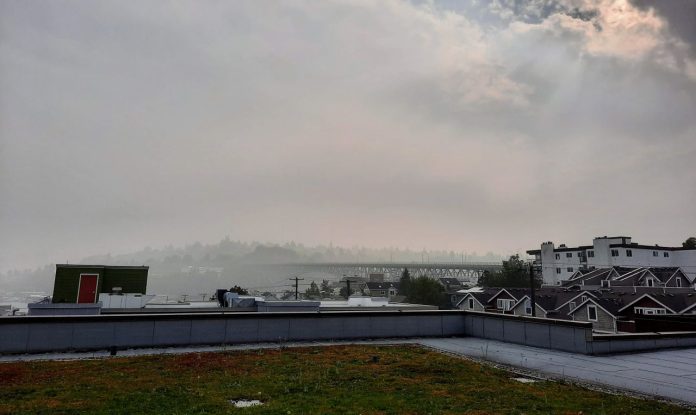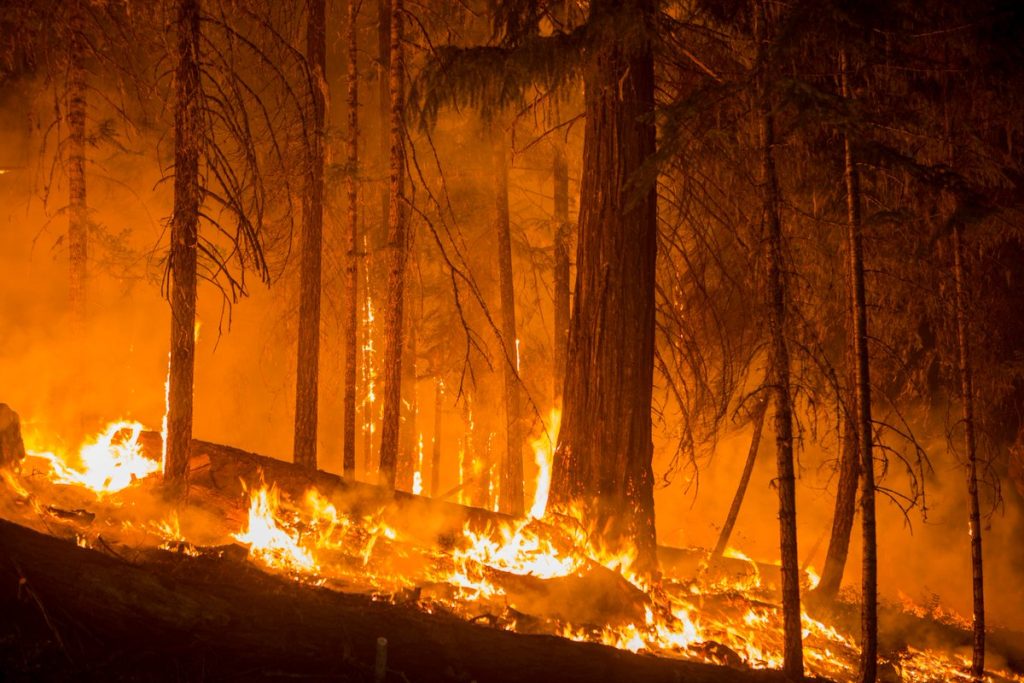
A week of forest fires and skies choked with toxic smoke was a sobering reminder of the fragility of our environment.
An incredible amount of Cascadia is burnt or ablaze. More than three million acres have burned in California, one million acres in Oregon, and 800,000 acres and counting in Washington. To put this in perspective the five million acres up in smoke across the West Coast equate to more forest land than in the entire portfolio of Washington Department of Natural Resources (DNR)–Washington has 45.6 million acres of land in all. It would seem unbelievable if we were not breathing the effects on a daily basis and choking on the proof.
Climate change’s terrible effects are upon us much faster than we imagined. Our poor environmental stewardship is increasingly looking like a runaway train and we badly need to build new tracks to avert utter catastrophe. Luckily, solutions exist.
One way we have gotten off track is that Washington’s State Environmental Policy Act (SEPA) tends to speed highway sprawl projects on their way and encourage copious amounts of parking in new buildings rather than encouraging emission-free transportation and sustainable building.
SEPA also does little to prevent rural and suburban development in areas vulnerable to fire. Dense infill housing projects and citywide reforms in Seattle have been challenged and delayed under SEPA. The wheels tend to be greased for sprawl, and squeaky for the walkable sustainable construction we need. To go along with SEPA safe harbors, local jurisdictions must create incentives for sustainable building projects, as Conor Bronsdon outlined.
Likewise, the Growth Management Act (GMA) is not doing enough to curb sprawl and encourage dense walkable city building. The Seattle metropolitan urban growth boundary is quite large and is predominantly single-family zoning therein, undermining the intent of the law. The smallest counties are exempt; medium-sized rural counties tend to implement the law half-heartedly and let sprawl continue. Groups like Futurewise fight to tighten up these county growth plans, but a more carefully crafted law wouldn’t need such constant gardening.
Futurewise is on the case with a campaign called Washington Can’t Wait to amend the GMA to promote walkable urban development and tighten up controls for sprawl and promote climate justice. Thinking it terms of urban planning is important because electrifying cars isn’t going to sufficient on its own. We also need to decrease vehicle miles traveled by moving people more efficiently with transit, biking, rolling, scooting, and walking.
Development encroaching on forest lands creates a multitude of problems. One issue is that it makes it much harder to do prescribed burns or let small forest fires happen to clear out underbrush. With development nearby, authorities douse fires immediately and tend to avoid the hassle of prescribed burns, given the greater risk of that going awry or eliciting complaints.
ProPublica traced the root of the wildfire problem to a century of misguided forest management practices:
“Academics believe that between 4.4 million and 11.8 million acres burned each year in prehistoric California. Between 1982 and 1998, California’s agency land managers burned, on average, about 30,000 acres a year. Between 1999 and 2017, that number dropped to an annual 13,000 acres. The state passed a few new laws in 2018 designed to facilitate more intentional burning. But few are optimistic this, alone, will lead to significant change. We live with a deathly backlog. In February 2020, Nature Sustainability published this terrifying conclusion: California would need to burn 20 million acres — an area about the size of Maine — to restabilize in terms of fire.”
Another problem is that rampant wildfires are a huge financial hit to insurers, leading them to jack up rates to compensate. Nonetheless, after a fire, homeowners tend to rebuild even if they’re in indefensible locations. Local governments don’t seem intent on blocking them as it angers constituents and decreases their tax base. It could well be the insurers who finally put their foot down in the face of governmental paralysis, as The Daily Podcast of the New York Times discussed last Friday.
Even if authorities convince the public to go along with aggressive prescribed burning, where forests are particularly unhealthy or overgrown, safe prescribed burns will be challenging given the tinder box before us. The scale is also daunting.
That’s why Washington Lands Commissioner Hilary Franz created a 20-year forest health plan that relies on other forms of forest treatment, such at thinning unhealthy forests with sustainable logging techniques. Franz sought to link forest thinning to an economic incentive by promoting mass timber construction to create a market for the small-diameter trees that have to come out of forests to lower wildfire risk. The large trees left behind can anchor the forests as they age–some becoming healthy old growth forests once more.

The 20-year plan dropped in early 2019 and unfortunately Governor Jay Inslee and the Democrat-controlled Washington State Legislature did not move with the urgency needed to implement the plan. It’s a visionary plan that could treat 1.5 million acres by 2033 while creating sustainable and affordable housing and boosting lumber towns in the process. We shouldn’t just approve this plan, we should accelerate it and place even more emphasis on a mass timber building spree.
In 2018, 440,000 acres burned in Washington state and that’s likely to be double this year. When are we going to take this problem seriously and act with all haste?
We have designed powerful climate delay mechanisms into our government and political economy on many levels. But we can act quickly to break our car dependence and put better mechanisms for sustainable city-making–which incidentally also works a lot better without a glut of cars. For cities to thrive into the future, that’s the route we need to go.
The editorial board consists of Natalie Bicknell, Ryan Packer, and Doug Trumm.
The Urbanist was founded in 2014 to examine and influence urban policies. We believe cities provide unique opportunities for addressing many of the most challenging social, environmental, and economic problems. We serve as a resource for promoting and disseminating ideas, creating community, increasing political participation, and improving the places we live.




